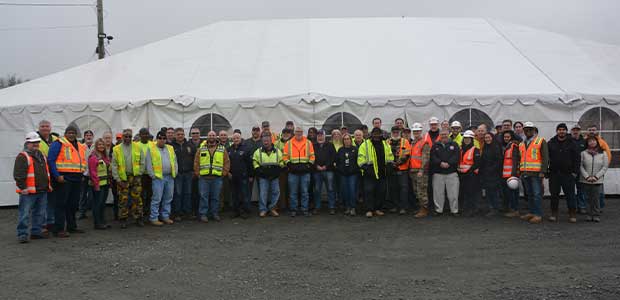
A Leader in Worker Safety: A Case Study on a New Jersey Environmental Cleanup Project
The team, which achieved one million man-hours without a lost time accident, shares their best safety practices.
- By JoAnne Castagna
- Mar 17, 2023
It’s the 1940s in Maywood, New Jersey. A new residential community has sprouted up and the homeowners want to beautify their front lawns, so they go to a nearby property to gather some fresh topsoil. Little did they know that they were helping to plant the seeds for one of the largest and most high-profile environmental cleanup projects in the nation.
The soil they gathered was from the grounds of Maywood Chemical Works, a company that disposed of radioactive waste on their property, as well as on a nearby wetland that’s the headwaters for the Lodi Brook. This waterway carried contamination downstream and spread it onto its floodplains where these new residential communities were being built during the construction boom following World War II.
Decades ago, these residents and the company were unaware of what they were starting, but today, the U.S. Army Corps of Engineers, New York District, is resolving it.
The agency in cooperation with partners is cleaning up the community to make it safe for residents, while at the same time keeping their own workers safe. They’ve been so successful that they achieved one million man-hours without a lost time accident. This is a significant milestone for the Army Corps and not often achieved in the industry and something especially important on environmental cleanup projects. The team reached this success by carrying out safety best practices that will be shared here.
Worker Safety Best Practices
Not only is the health of the community important, but also the safety of the project’s workers, especially when it comes to Formerly Utilized Sites Remedial Action Program (FUSRAP) projects. Michael Johnson, team leader, New York District, U.S. Army Corps of Engineers said, “Safety is very important for all construction projects and especially for FUSRAP projects because these projects introduce the workers to potential exposures to contaminants above and beyond your typical construction project hazards.”
Because of this, the team has implemented a series of worker safety best practices for its workers. The team has been so successful in doing this that they achieved one million man-hours without a lost time accident. “This type of achievement is rare. This is the only project that I have worked on in the Army Corps that has achieved this milestone,” said Johnson, who has worked on this project for 15 years. Following are some of the key worker safety best practices the team is performing that make this project a leader in worker safety.